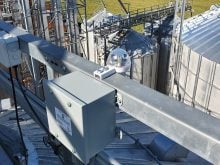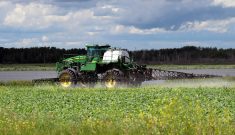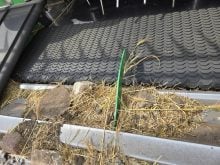New research from Pennsylvania State University has shown that no-till production can reduce herbicide use and maintain crop yields by implementing integrated weed-management methods.
Traditionally, no-till farmers rely more heavily on herbicides to control weed growth. To test whether herbicide applications could be reduced in no-till production, lessen environmental impact and control selection pressure by weeds for herbicide resistance, researchers at Penn State’s Russell E. Larson Agricultural Research Center in Rock Springs conducted a nine-year experiment using herbicide-reduction practices in a dairy crop rotation.
With more than 65 percent of agronomic crops under no-till production in Pennsylvania, weeds are spreading and becoming more difficult to control, reducing crop yields.
Read Also

Crop quality looks good this year across Prairies
Crop quality looks real good this year, with the exception of durum.
“Farmers have been relying on a few common herbicides when they use no-till production of corn and soybeans, such as glyphosate, and so the management has narrowed to the same herbicide again and again,” said Heather Karsten, associate professor of crop production and ecology.
“There is now a strong selection for weeds to build resistance. Herbicide-resistant weeds are a global problem particularly in environments relying heavily on herbicides that are the same or herbicides that are from the same chemical families.”
Karsten’s team launched a nine-year study in 2010 on a six-acre experimental plot. According to the report, the study used a randomized complete block design with crops as the main plot and weed management strategies as split-plots.
Crops included soybean, corn, forage such as alfalfa or alfalfa and orchard grass, and canola. Each crop over the six-year rotation was included every year in randomized plots.
“It was a nine-year experiment on a six-year rotation, one and a half times a rotation,” said Karsten.
The study had the flexibility to modify various treatments. Weeds were sampled in late summer before soybean and corn harvest, at each harvest of the perennial forage establishment year then at the first harvest of the first forage production year.
Weeds were not measured in the canola crop and, in 2018, soybean plots were replaced with corn.
The crop rotation included soybean and corn with fall-planted cover crops and three years of alfalfa followed by winter canola.
According to the report, the process to reduce the use of herbicides included banding residual herbicides over corn and soybean rows and using high-residue, inter-row cultivation, seeding a small-grain companion crop such as oats with alfalfa and orchard grass, then plowing once in six years to terminate the perennial forage rather than killing it with an herbicide. This approach was compared with standard herbicide-based weed management applications in a continuous no-till environment.
In corn and soybean, weed biomass was often greater in reduced herbicide use than in standard herbicide use and increased over the years in the reduced herbicide treatments. In the forage, weed biomass did not always differ between treatments.
“We had two years of summer annuals, but we had cover crops after the annuals and then we rotated the three years of perennials and rotated the winter annuals, so we had diverse crop-like cycles,” said Karsten. “While the weed biomass was greater than when we relied on herbicides, it was still not significant enough in the test years to reduce crop yield. Just because you have some weed biomass, it doesn’t always result in a yield reduction. But we were gathering more weed biomass when we diversified away from herbicides and used some alternative methods.”
She said every crop was planted every year. The six plots represented each phase of the rotation. One half was always managed with the standard herbicide strategy; the other half was managed with the integrated weed management or reduced herbicide strategy.
“Each crop was a quarter of an acre and replicated four times so in a dry year every crop was present under both management practices. There were years when the crop didn’t yield as well because it was very dry. That’s part of the challenge and why you do long-term research because you want to see how the system performs across all the different kinds of weather.”
“In this long-term study, we demonstrated that herbicide reduction is viable provided there is a diverse rotation with a broad array of control methods,” said Karsten. “Increasing crop life-cycle diversity can reduce weed outbreaks and selection pressure for herbicide-resistance weeds.”
Karsten said in the report that there is significant focus on finding a balance between sustainability and productivity, as poor weed control can lead to reduced yields, poor crop quality and herbicide-resistant weeds. While previous studies showed that reducing herbicide use is viable, few studies have looked at the long-term effects in a no-till system.
“This study suggests that herbicide reduction is viable provided there is a diverse rotation with a broad array of control methods,” she said. “Increasing crop life-cycle diversity can reduce weed outbreaks and selection pressure for herbicide-resistance weeds. Using an integrated approach, it is possible to make agriculture more sustainable and environmentally friendly without decreasing productivity.”
The report was published in Agronomy Journal.

















